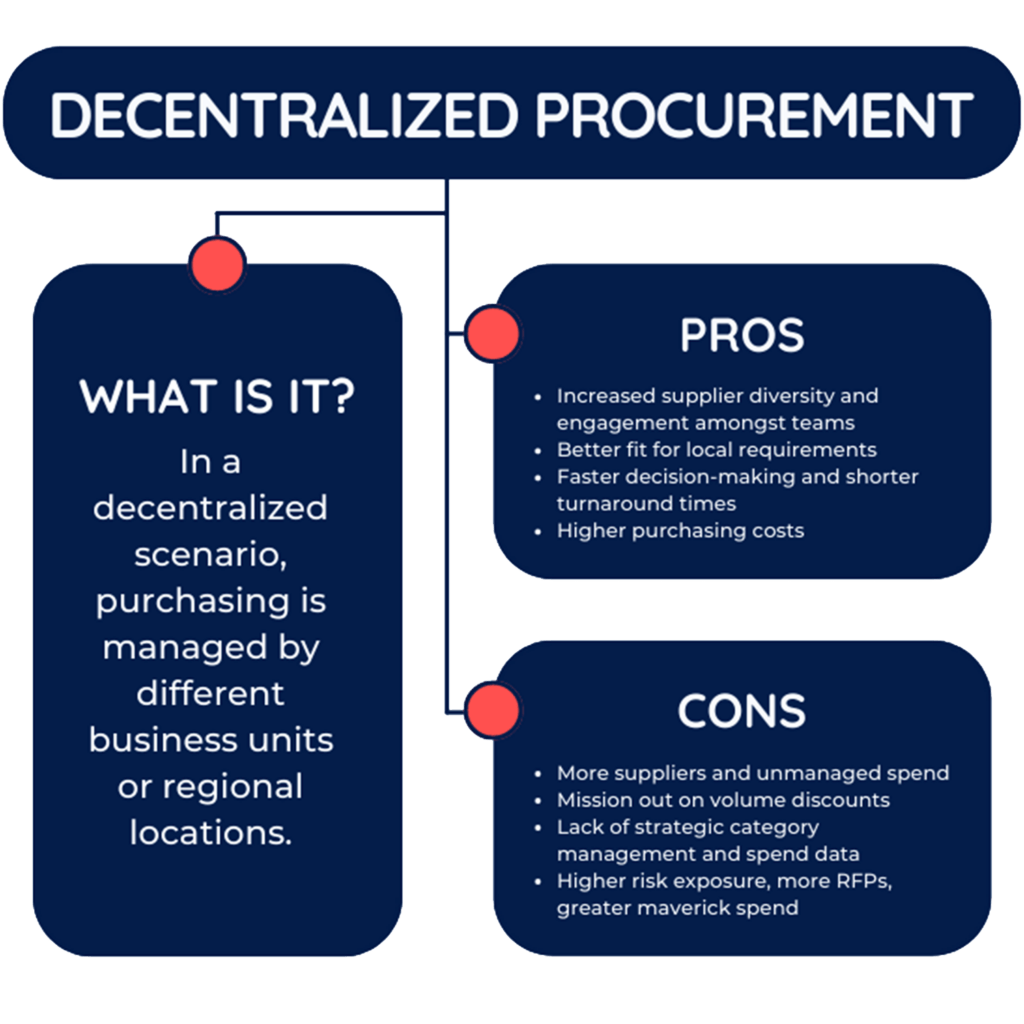Centralized vs. Decentralized Procurement
A quick reference guide highlighting centralized vs. decentralized procurement and which strategy is best for your organization.

Quick Guide to Centralized Procurement
Wondering what the difference is between centralized and decentralized procurement?
We’ve put together a quick reference guide that defines the concepts, explores the pros and cons of both options, and shows how a group purchasing organization (GPO) can help implement the best strategy for your business.
In This Guide:
What is Centralized Procurement?
Centralized procurement means that all goods and services for the company are purchased at the headquarters level.
For example, a company decides to standardize its cleaning services across 20 different office locations. The centralized procurement team scopes out the project, approaches the market, evaluates suppliers, negotiates a volume discount, and awards the contract to a single supplier.
However, this approach means local SMEs at different locations miss out on consideration and implements a one-size-fits-all solution despite some of the offices having different maintenance needs.

Pros & Cons of Centralized Procurement
Pros
- More control
- Standardized purchasing processes
- Greater transparency leads to more accurate spend analysis
- Higher purchasing volume equates to better discounts
- Better communication and relationships with suppliers
- Enables tail spend auditing to prevent savings leakage
- Improved supplier risk management
- Straightforward commodity price tracking
- Less time spent researching and negotiating with suppliers
- A central location for purchase orders, invoices, and spend reports
- Simpler inventory management
- Minimized maverick spend
- Procurement specialists do the purchasing
- Provides an opportunity to implement strategic sourcing for all locations
Cons
- Centralized workload can cause bottlenecks and delays
- Longer delivery and turnaround times
- Centralized processes can become too complex and costly to maintain
- Regional/business unit managers will have less autonomy, which can cause frustration
- One-size-fits-all solutions won’t meet each location’s unique needs
- Inability to leverage local discounts, impacting supplier diversity
What is Decentralized Procurement?
In a decentralized scenario, purchasing is managed by different business units or regional locations.
For example, an office manager is tasked with organizing catering for an important event with international partners. Using her knowledge of the types of food her team enjoys, she approaches a minority-owned supplier in the area who can offer local cuisine that will impress their guests.
The event is a success, although the catering was a one-off purchase that failed to leverage any sort of volume discount.

Pros & Cons of Decentralized Procurement
Pros
- Increased involvement and engagement among decentralized teams
- Increased supplier diversity
- More local knowledge
- Better fit for local requirements
- Faster decision-making
- Shorter turn-around times and fewer bottlenecks
- Higher purchasing costs
Cons
- More suppliers
- Missing out on volume discounts
- Unmanaged spend
- Lack of strategic category management
- Siloed and invisible spend data
- Duplication of effort
- Multiple contact points for suppliers
- Higher risk exposure
- More RFPs, more contracts, more workload
- Increased maverick spend and non-compliance
What is Center-Led Procurement?
In a center-led structure, the core team manages strategic purchases while decentralized teams manage tactical purchasing needs. Some organizations use spend thresholds and risk assessments to determine what is managed by the central team and what can be decentralized.
The core team may set up procurement software, guidelines and processes for decentralized teams to use.
How a GPO Can Help
There’s no one-size-fits-all answer to the centralized vs decentralized vs center-led question. It depends on your organization’s size, its current needs, and the dynamics between headquarters and regions.
By partnering with Una, companies can unlock buying power and access similar volume discounts across dozens of categories.
With the help of a group purchasing organization, procurement teams can supercharge their volume purchasing strategy to levels that are well beyond the reach of any individual company.
Contact Una today to learn how we enable astronomically higher cost savings than those created through centralized spend management.

